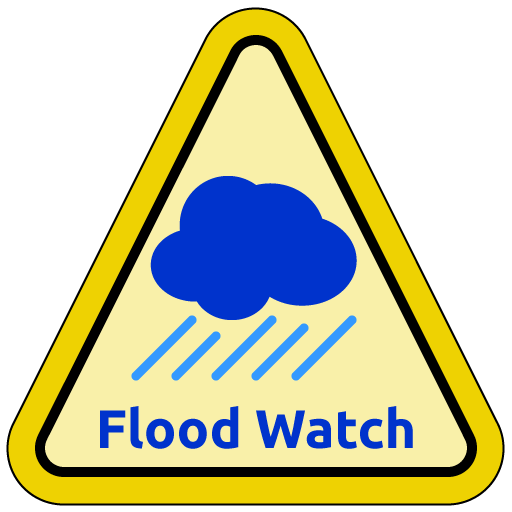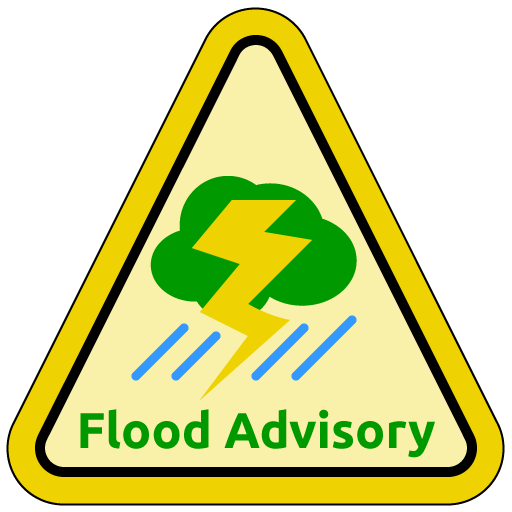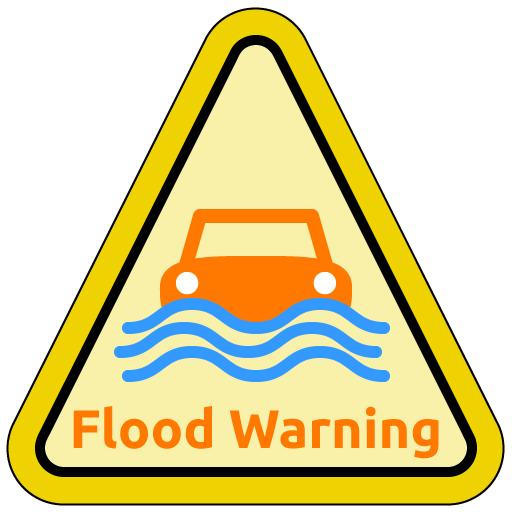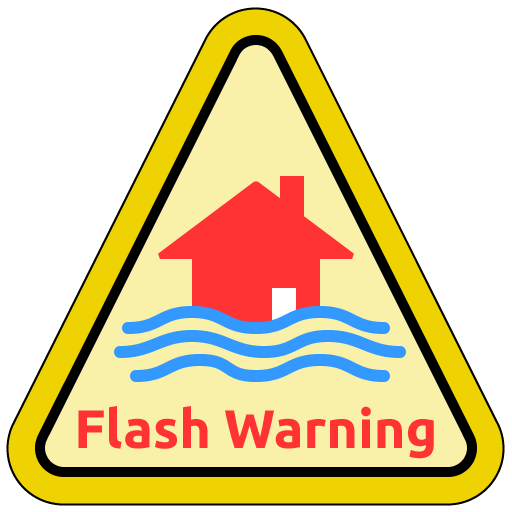Everyone has the potential to experience a flood.
Contrary to what can be portrayed on the news, flooding does not only occur near rivers but can happen anywhere, especially when heavy rains are involved. As sea levels continue to rise the risks along the coast are already here, and will continue everywhere with heavy rains.
Explore the map below to learn more about flooding risks around you.
Addition data links:
Data is a powerful tool. If interpreted correctly, data points can mitigate risks from potentially deadly disasters. Here are some useful links to help understand more about water in your area.
Floods
are
Deadly
We have gotten better at mitigating deaths from natural disasters, but behind heat related fatalities, flooding is the deadliest hazard and also affects all age groups. Nearly half of all flash flood fatalities are vehicle-related, unfortunately the drivers failed to realize how powerful the movement of water can be.
If or when the water comes, public announcements will be made at least over the radio and television and follow standardized warning levels.
Get familiar with each safety status below!

Status:
Flood Watch
The advantage of finding yourself in a “watchful status” state is time. Time is valuable, especially in the face of a disaster.
The good first item to prepare is an evacuation route. Decide on an evacuation location (on higher ground) should you get separated from families, friends, or co-workers. Make sure to print and save the route in the places that make the most sense both at home and work. All members of your household should understand the plan and rehearse as needed.
Many of us have kids, pets, and even elderly or disabled people living with us. These are people and pets require extra attention. It is imperative to plan and get as much of the basics done ahead of time so you have more time to ensure family and friends can safely evacuate.
Supplies are critical in any disaster. Most of us have a basic evacuation kit. Some items to add to it are rain gear, extra cash, a spare set of car and house keys, water filtration (to clean water), a water pump, and a camera for documenting damage. An emergency contact sheet contains basic information (name, address, phone, email, and a photo) of contacts, and physical and digital copies are recommended. Store the sheet in at least two locations like your home with family and another with a trusted neighbor, at work, or friend’s house.
When addressing your home’s needs in the event of a flood, document your assets before they get wet:
Ensure all electronics, heaters, and furnaces are elevated above the potential water line, and if you have a basement consider installing a water pump. Keep an eye on the gutters as they can quickly become inundated with leaves which is another disaster waiting to happen once heavy rains hit. Lastly, consider acquiring flood insurance. Here are some handy links:


Status:
Flood Advisory
At the advisory stage, you’re actively preparing for a flood.
Water may soon be everywhere but it is dirty and not drinkable. You will need water for consumption, essential care, cooking and sanitary purposes. Focus on consumption and essential care first. Storing drinking water is critical, but so is water for toilets (around 2 Gallons Per Flush) and bathtubs and sinks. The latter are Ok for toilets but not for consumption. The CDC published a comprehensive water supply planning guide that is a must-read.
Be sure to start gathering:

Pets like dogs, and cats are not nearly as complicated as people but they won’t know where to evacuate, so make sure to include them in your pre-planning. Create a special emergency bag for them or at least add pet supplies to your current emergency kit. If you own livestock make sure you have a specific evacuation plan for them to get to higher ground in the most expedited manner possible.
Pay attention to the radio and television. Keep your phone charged, and get ready to turn off the utilities like gas and power.


Status:
Flood Warning
Once you have received the warning signal to evacuate, do so immediately.
Floods are strong. There is a reason why the fatality rates are so high during floods. Do not document your fate, there are countless homemade videos of folks documenting floods but many may never make it online.

Flowing water is extremely dangerous – on foot and driving. Avoid wading through water at all costs. Instead, make way for yourself and your family to higher ground. As you make your way remain cognizant of the height you are fleeing to. If it is too low, places like building roofs might be your best option. An additional plus with a building roof is it is easier for helicopters to perform airlifts if necessary.
Avoid driving. Traversing water in a car can be tricky, and even worse are bridges with fast-moving water underneath. Many cars are not very heavy and can be easily washed away. Once your tailpipe is fully submerged the engine will become suffocated. At this point, it will be very tricky if not impossible to evacuate the car.

Status:
Flash Warning
If you find yourself in a flash warning, remain calm.
Easier said than done, but life-threatening mistakes are generally committed during times of panic. If you are outside, use something like a stick to test the depth of a flooded road. Additionally, avoid downed powerlines and resulting sparks.
Flowing water is extremely dangerous – on foot and driving. Avoid wading through water at all costs. Instead, make way for yourself and your family to higher ground. As you make your way remain cognizant of the height you are fleeing to. If it is too low, places like building roofs might be your best option. An additional plus with a building roof is it is easier for helicopters to perform airlifts if necessary.
Injuries during floods are common so be sure to have a first-aid kit handy. Keep safe and calm and focus on evacuating those who need extra help. The priority is safety and waiting for a rescue team if needed, not taking on the water yourselves.
Post-Flooding
Do not return to an area until authorities deem it safe.
Some areas might appear safe to re-inhabit but there are a host of items one cannot perceive with the naked eye.
It is important to note that there will be toxic materials in the water. Thick gloves and boots are recommended and be sure to review your home for live animals who have taken refuge. Learn more about disaster cleanup from the Red Cross. If you smell gas, be sure to report it! There will be bacteria in the water as well as a mixture of potentially dangerous chemicals so keep open woulds away and treat injuries first. Water pumps are helpful in extracting water from large areas or basements.
Relief organizations recruit volunteers for specific tasks so it is imperative to locate your local emergency resource center and stay informed.
If you are in a position to help clean up more than just your home please do so. There is never “enough help” so lending a hand is always welcome. Consider volunteering with a relief organization.

One of the most distressing moments in a flood is when you encounter your home, furniture, and personal items in disarray. There is not much you can do, but preparing yourself to make difficult decisions can make this process a bit easier.
Keep & Clean:
You can typically keep and clean items like metal and plastic furniture, china dishware as well as ceramics, jewelry, silverware and kitchen utensils, and glass objects.
Maybe Items:
Items such as photos and books, bedding and blankets, rugs, solid wood furniture, clothing, appliances, and electronic devices fall into the “maybe” category. They will be in varying states of disarray and each case is specific on its own.
Likely Throwaway:
Mattresses, leather furniture, cloth upholstered furniture, cushions and pillows, medicine, and wood veneer furniture will nearly always be ruined in a flood. Do not spend much time debating whether these items fall into the maybe category. It is best to discard them and focus on the salvageability of the maybe items.
Mold and bacteria can ravage a structure post-flooding. Once the water recedes there wills still be moisture around, and if it doesn’t dry within a few days mold can begin to grow. Breathing mold is unhealthy and can cause allergic reactions. Learn more form the US Environmental Protection Agency they have a valuable resource on mold and its affects after a flood.

Wrapping Up
Disasters are traumatic, but there are agencies that can help. Losing property or worse is a life-altering experience, so do seek assistance if you need it. To learn more and continue educating yourself on flood safety, preparations, and responses, Ready.gov, FEMA, and the Red Cross are excellent resources.
ADDITIONAL RESOURCES AND USER CONTRIBUTED CONTENT
Federal Emergency Management Agency (FEMA), OpenFEMA Dataset: Individuals and Households Program – Valid Registrations – v1. This product uses the FEMA OpenFEMA API, but is not endorsed by FEMA. The Federal Government or FEMA cannot vouch for the data or analyses derived from these data after the data have been retrieved from the Agency’s website(s).


